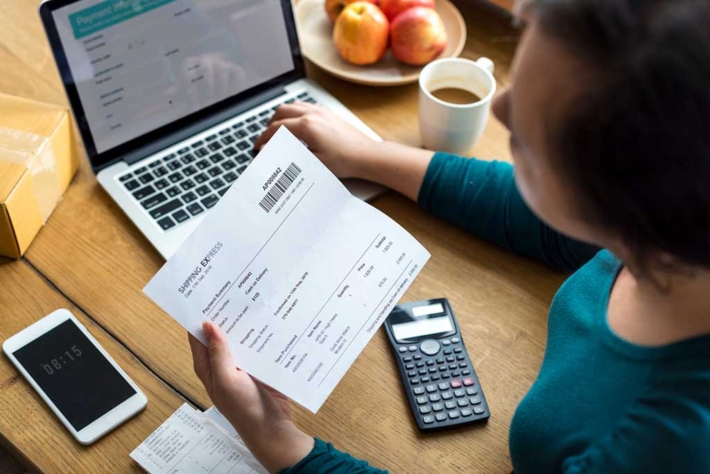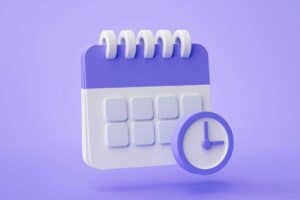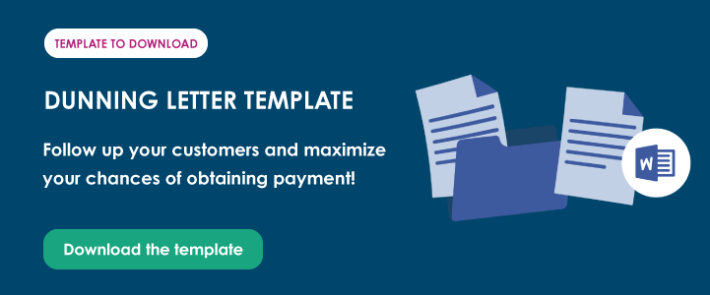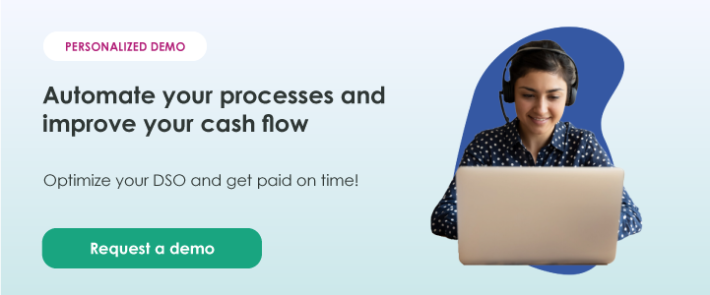Debt collection is an essential aspect of a company’s financial management. It involves procedures enabling a creditor to obtain payment from a defaulting debtor. In practical terms, debt collection means that a company does not have to suffer cash flow pressures due to late payment, or even significant losses. Implementing an effective debt collection procedure therefore preserves the company’s financial health. Find out more about the different methods and strategies you can implement to benefit from the advantages of debt collection.
Different types of receivables
First of all, it’s worth remembering that there are different types of debt. Depending on the type of claim, the collection procedures may differ.
Commercial debts, for example, are debts between a creditor and a debtor who are both merchants. A written document is essential. This generally takes the form of an invoice or bill of exchange.
Personal debts, on the other hand, are debts contracted by an individual on a personal basis with a company, for example. These debts may be contracted for day-to-day needs, or to carry out a personal project. They therefore differ from business debts.
There are also tax receivables, which refer to the company’s claims on the French Treasury. This is the case, for example, with a VAT credit or an overpayment of social security contributions or corporation tax. Conversely, tax receivables may be owed to the Treasury if the company owes it a tax debt.
Finally, bank receivables are receivables held by the banking institution against a debtor, the company. This may correspond to an overdraft or a short-, medium- or long-term bank loan.
Summary of the different types of receivables:
| Trade receivables | Binds a creditor and a debtor who are merchants |
|---|---|
| Personal receivables | Debts contracted personally with a company |
| Tax receivables | Company claims on the French Treasury |
| Bank receivables | Claims held by the bank against the company |
Would you like to discover the best practices of “Cash Culture”? Discover in our white paper how to explore a new approach to “cash culture” in which your Credit Manager and your customers become real players in your company’s performance.
How does debt collection work?
The debt collection procedure follows several stages:
- debt analysis ;
- communication with the debtor ;
- formal notice ;
- amicable collection ;
- judicial collection if necessary;
- settlement of the debt.
The first step in collecting a debt is to analyze it. In order to claim payment, you need to ensure that the debt is certain, liquid and due. This means, among other things, that the payment deadline granted to the customer has passed. The invoice is therefore overdue.
When you notice a default in payment, the first thing to do is to contact the debtor. It may be that the transfer has just been issued, or that the debtor has simply forgotten. Customer reminders can be sent by telephone, e-mail, SMS or post.

If the debtor fails to respond to the reminder or pay the invoice, you can send a formal notice to pay. This official letter, sent by registered mail with acknowledgement of receipt, requires the debtor to pay within a specified period, usually 15 days. The formal notice specifies that if the debtor fails to pay, the company may initiate legal collection proceedings, similar to those for an injunction to pay.
It is important to note that the formal notice is the starting point for calculating late payment interest owed by the debtor.
There are several possible outcomes:
- the debtor pays within the time limit specified in the formal notice: the dispute is closed;
- the debtor does not pay within the time limit specified in the formal notice, but asks for the debt to be adjusted: an amicable collection procedure can then be initiated, either via an agreement between the parties, or via an official procedure such as conciliation or an ad hoc mandate;
- the debtor remains silent or does not propose a solution within the time limit set out in the formal notice: the creditor can request the opening of legal debt collection proceedings, in order to obtain an enforceable title against the debtor.
Debt collection techniques
To obtain payment of its receivables, the company has a number of collection techniques at its disposal:
- telephone reminders ;
- reminder letters ;
- negotiations and arrangements;
- use of a collection agency;
- hiring a specialized lawyer.
Telephone reminders

Telephone reminders are certainly the quickest and easiest way to contact a customer whose invoice is overdue.
Telephone reminders help maintain communication and the business relationship, especially in the first instance. In fact, at the time of the very first reminder, the creditor does not know the causes of the delay. It is therefore necessary to have all the information to decide what action to take next.
However, a simple telephone call may be all that’s needed to make up for an oversight or a delay in processing by the accounting department.
Reminder letters
A dunning letter is a more formal way of demanding payment of an unpaid invoice. This facilitates proof if the dispute has to be brought before a judge at a later date.
It can be sent by e-mail or simple post.
The content is simple and cordial. The aim is to remind the customer of the late payment and ask him to remedy the situation as soon as possible.
Here again, the aim is to preserve the business relationship. However, it is possible to specify in the reminder letter that, in the absence of payment of the overdue invoice, no new orders may be placed.
The creditor company can send one or two reminder letters if necessary. Beyond that, if the debtor has still not fulfilled his payment obligation, it is necessary to send a formal notice.
Would you like to send a dunning letter to your creditor? Download our dunning letter template, fill in the essential information and send your letter.
Negotiations and arrangements
Legal proceedings can be long and costly, and usually put an end to the business relationship. To avoid this, it may be advisable to remain open to negotiations, in order to reach an arrangement with the defaulting customer.
For example, you could consider staggering payments.
In all cases, it is advisable to formalize the proposals made in writing, and to formalize the arrangement in a written document, dated and signed by both parties. This way, if one of the parties fails to comply, the agreement can be terminated, and payment proceedings resumed.
Rorking to a collection agency
It is possible to entrust the collection procedure to a collection agency.
The collection agency is a service provider bound to the creditor company by an agreement that specifies, in accordance with article R214-3 of the French Code of Civil Procedures :
- the basis and amount of the sums due, with a separate indication of the various components of the claim(s) to be recovered from the debtor;
- the terms and conditions of the guarantee given to the creditor against the pecuniary consequences of civil liability incurred as a result of the debt collection activity;
- the conditions for determining the remuneration payable by the creditor ;
- the conditions for repayment of funds collected on behalf of the creditor.
The collection agency then sends out the reminder letters and formal notices if necessary.
In return, the collection agency receives a commission in the form of a percentage of the amount recovered.
Hiring a specialist lawyer
It is also possible to entrust the debt collection procedure to a specialized lawyer.
This can be particularly useful for large debts, especially when communication with the debtor seems to have broken down.
A debt collection lawyer can not only negotiate and formalize an agreement, but also issue a formal notice of default, initiate an injunction to pay or summon the debtor to pay.
Best practices for effective debt collection

To avoid and optimize your in-house debt collection process, we advise you to adopt the following best practices:
- monitor customer payment behaviour;
- regularly monitor customer accounts;
- clear and accurate invoicing;
- establish payment terms;
- implement a collection policy;
- use debt collection software.
Monitor customer payment behavior
The best way to avoid non-payment is to control customer risk right from the contract negotiation phase. This means monitoring customers’ payment behaviour even before they sign a contract with your company.
In practice, this means checking the solvency of your future customers.
To do this, you can consult various sources of information. The main sources include credit reports provided by specialized agencies, business references from other companies, online searches for comments or disputes, public registers such as the Sirene database, Bodacc and the National Register of Companies (RNE), as well as professional networks and information exchanges within your industry. By combining these sources, you can gain an overview of a potential customer’s payment history, creditworthiness and financial reputation, enabling you to assess the risk associated with a business relationship.
In this context, it’s also worth mentioning the connectors integrated into collection software, which enable you to establish a connection with financial information providers and credit insurers in order to access up-to-date data on customer creditworthiness in real time. This enhances monitoring of payment behavior, facilitates risk assessment and helps to make informed decisions when establishing business relationships.
Regularly monitor customer accounts

Regular monitoring of accounts receivable is a very good reflex when it comes to collections.
It enables you to detect late payments at an early stage, so you can react quickly to prevent the situation from deteriorating.
It’s also very useful for analyzing customer payment behavior. For example, does a given customer always tend to pay on the last day of the payment period, or is he systematically late?
This monitoring will not only help you adjust the payment terms to be granted to each customer, but will also encourage your teams to be particularly vigilant with certain profiles, especially when taking new orders.
Clear and precise billing
To be effective in the event of non-payment, you need a clear and precise billing system.
This implies several things:
- have well-drafted terms and conditions of sale that are sent to each customer;
- have a clear invoice template;
- have a precise billing follow-up procedure that makes it easy to identify unpaid invoices and the current procedure.
Setting payment deadlines

Secondly, to limit late payments, it is necessary to establish payment terms according to the customer’s risk profile. For example, a new customer or one who has been late several times will have a shorter payment term than a loyal customer who always pays on time.
In addition, payment terms granted to customers must be calibrated to the payment terms the company enjoys with its own suppliers. This reduces the need for working capital and ensures a good level of cash flow for the company.
Implement a collection policy
The collection policy is a written document setting out the rules applicable to the management of accounts receivable and invoicing. It is generally drawn up by the Chief Financial Officer (CFO), in conjunction with the credit manager if the company has one.
This policy must be applied both by the sales teams, particularly when negotiating customer terms, and by the accounting teams when invoicing and monitoring payments.
It therefore helps to increase efficiency and involve all teams, so as to create a genuine cash culture.
Using debt collection software
In addition, to facilitate the management of overdue and unpaid invoices, the use of debt collection software is highly recommended.
This type of software not only tracks the status of invoices, but can also be automated, so that reminder letters and formal notices are sent automatically. As a result, staff can concentrate on the most complex cases. These functions also offer added value in terms of monitoring and risk management. By closely monitoring the status of invoices and automating payment reminders, the software enables the early detection of late payments and the identification of at-risk customers. This enables collection teams to take proactive measures to minimize the risk of non-payment, and to implement appropriate strategies to recover receivables.

What’s more, if you’re involved in tendering and signing public contracts, your collection software needs to be compatible with the Chorus Pro platform. This online portal enables you to transmit your electronic invoices to government bodies. By connecting your collections software to Chorus Pro, you can monitor the status of your invoices in real time, identify pending receivables and dun them directly from the software.
This is all the more important, given the regulatory changes currently underway and applicable from July 2024, to choose a collections solution capable of connecting to Partner Dematerialization Platforms (PDP) or Public Billing Portal (PPF). Your collection software must be able to keep pace with these technical developments.
For example, CashOnTime is a complete solution, published by DIMO Software, which structures receivables management from the automation of payment processing to debt collection. Credit management, collection, litigation and lettering solutions are at the heart of this collection software.
No company can afford to overlook debt collection, or risk jeopardizing its financial health. That’s why the various stages of the collection process must be scrupulously followed. By adopting certain best practices, a company can not only improve its collection procedures, but also reduce losses and improve cash flow.


